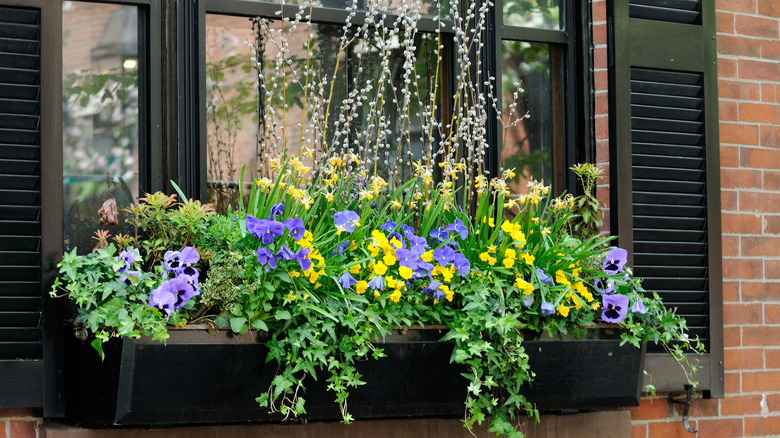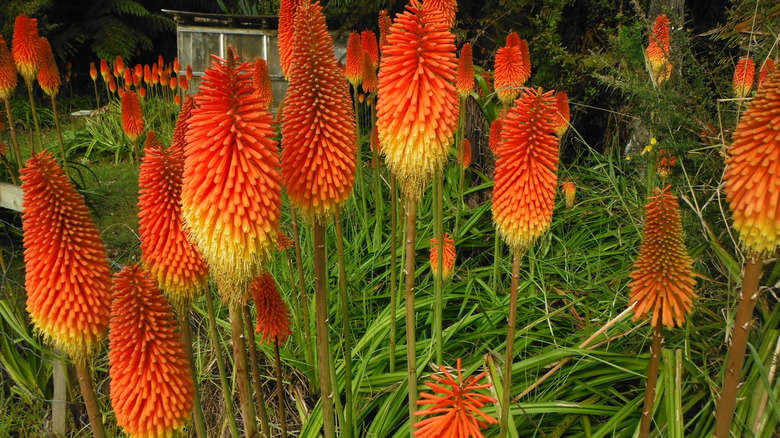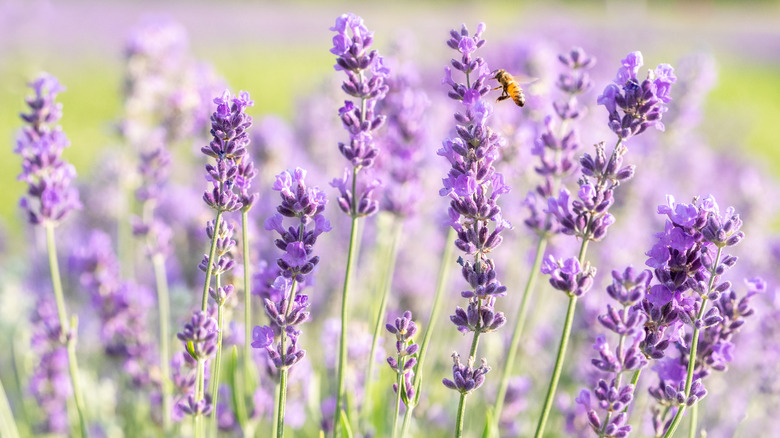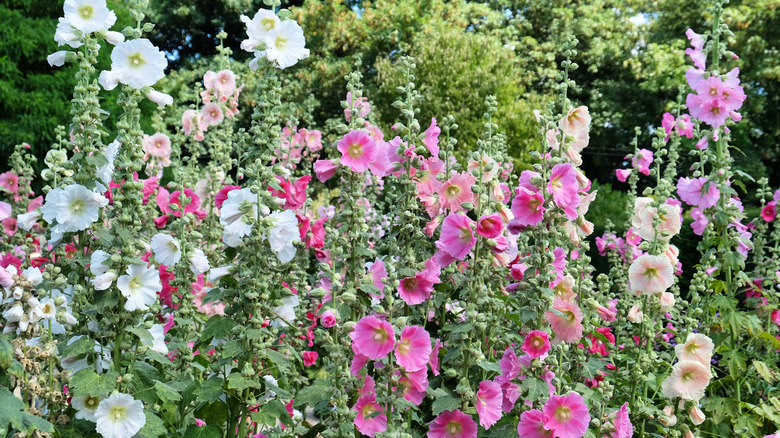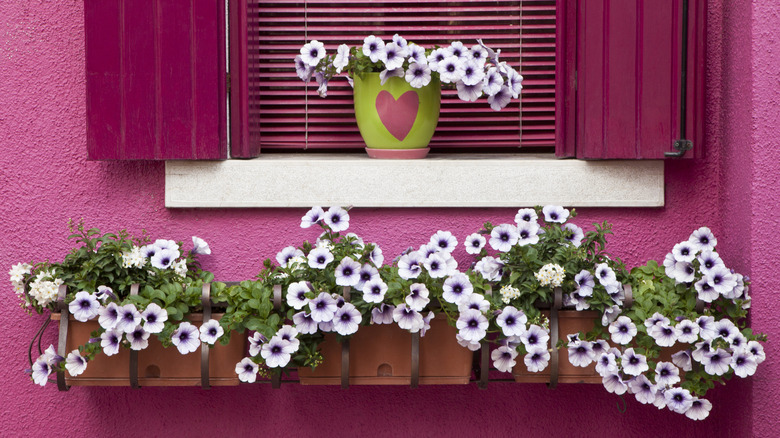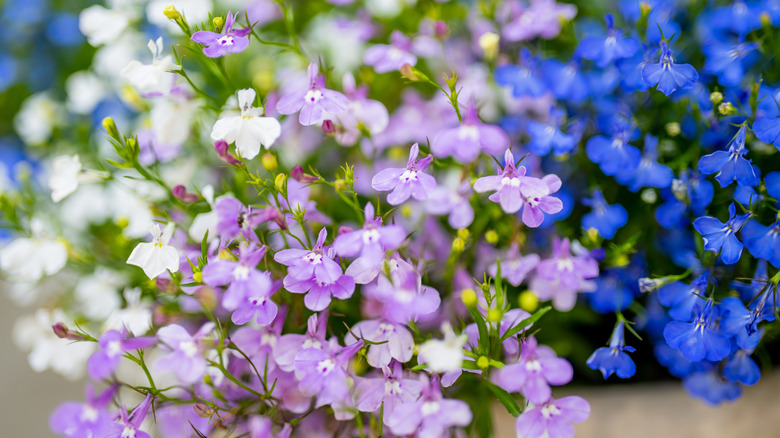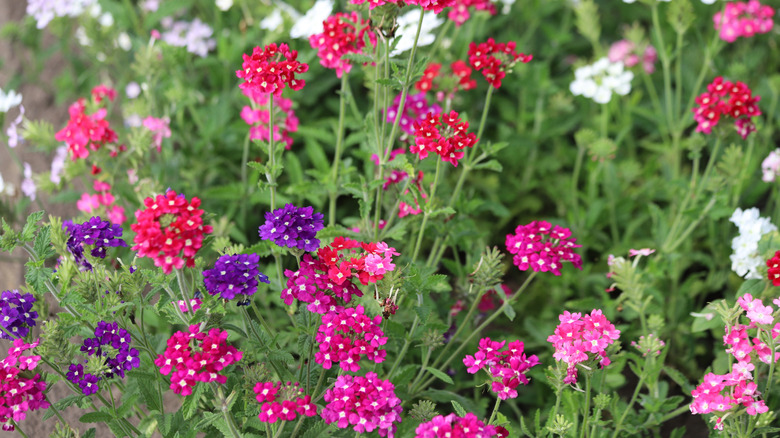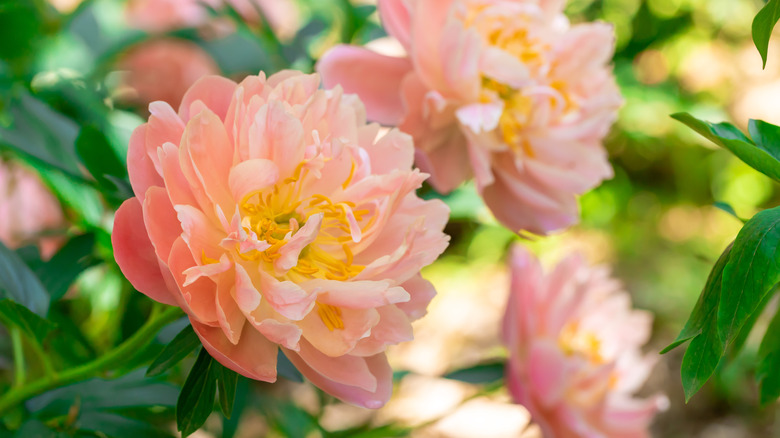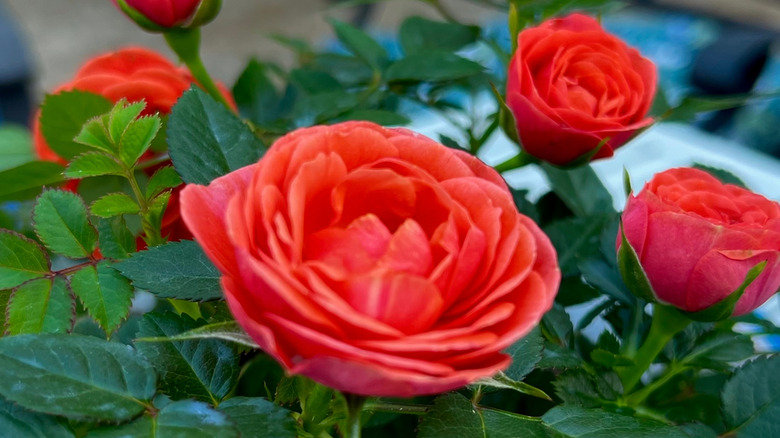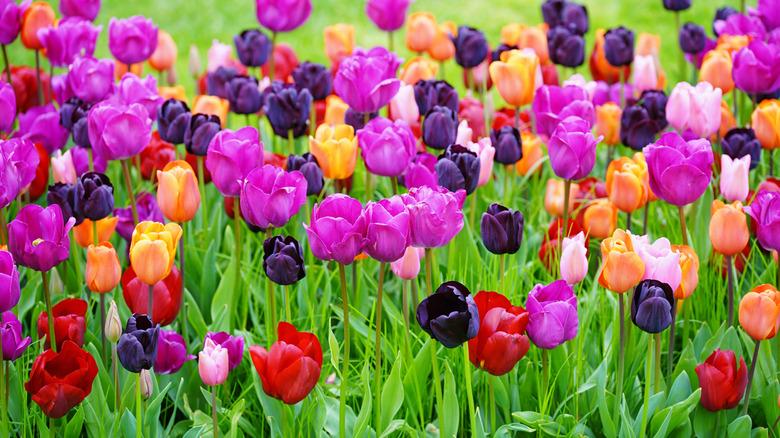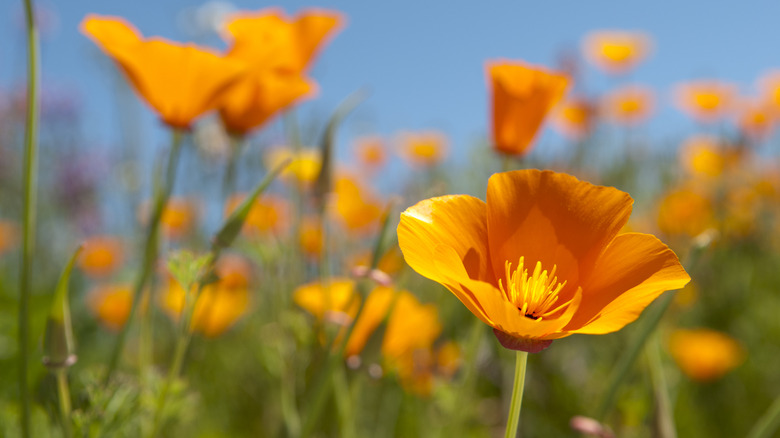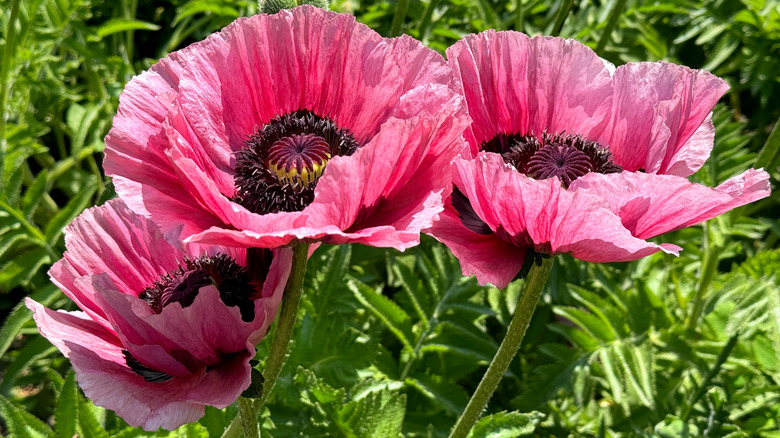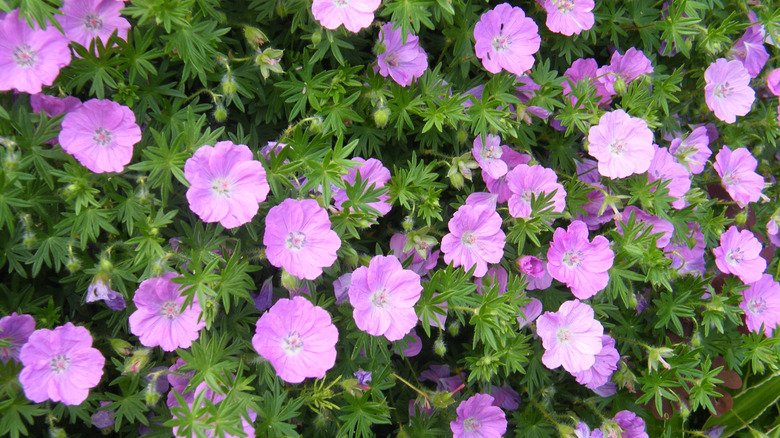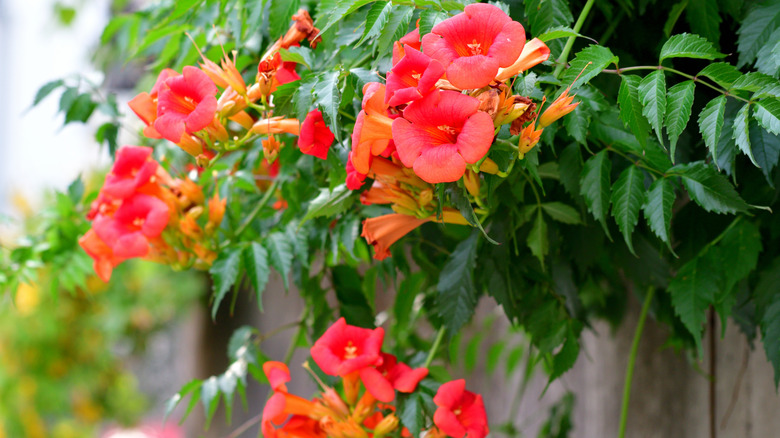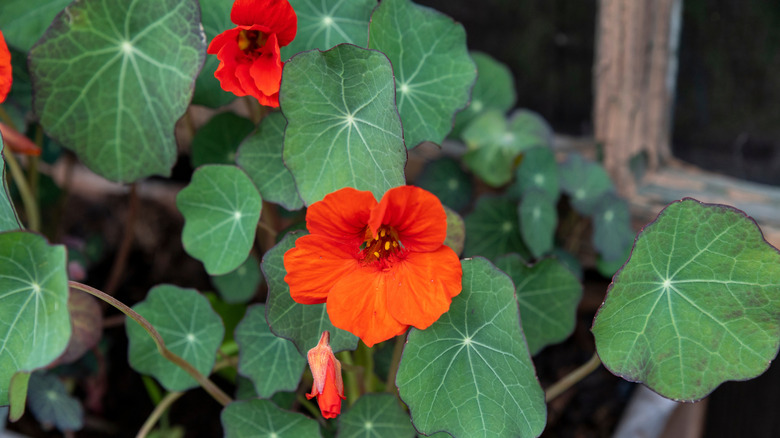Top 7 Flowers That Won't Thrive In Your Window Box Planters (& What To Grow Instead)
Window box planters are perfect for gardeners who have limited space but still want to grow flowers or simply want to add more color to the outside of their homes. However, not all plants are suitable for these containers, so choose your species carefully. "If you want to fill your window box planters with beautiful blooms, there are a few important things to consider, including size, design, and lighting requirements." Tiffany Selvey, House Digest's garden editor and in-house master gardener, shared. Additionally, if you plan to add multiple types of flowers in one planter, make sure they are compatible first. Not only does each plant have its own unique care needs, but some species have competitive root systems that can outcompete others for space, water, and nutrients.
You should also consider which windows you'll add a planter box to. "Understand the amount of light your window box planters get. If they're on the north side of your house or under a large overhang, they may get little to no direct sun. Avoid planting flowers that require full sun in these areas." Selvey explained. For example, if you want to grow plants in a shady location, choose plants that can tolerate limited sunlight, like wax begonias. Similarly, avoid putting plants that prefer low light conditions in a planter that will get hit with bright, direct light, or they could get sunburnt. To make the selection process easier, let's get into the flowers that won't thrive in window box planters and some better alternatives.
Don't grow red hot poker
If you love watching hummingbirds buzz around your yard, you may have considered adding one of their favorites, red hot pokers (Kniphofia). However, taller varieties can grow up to 4 feet tall, so they aren't suitable for window boxes. "Plants that are too tall will obstruct the view out of your window and may become too top-heavy for a window box. Select flowers that only reach about a foot to 18 inches in height." Selvey explained. Although some dwarf varieties may be suitable, many of them will likely be too tall for your window.
Grow lavender instead
Lavender (Lavandula angustifolia) is great for adding some vertical dimension to your planter without covering your entire window. "Consider using the 'thriller, filler, spiller method' as a simple formula for filling your containers." Selvey suggested. Thriller plants, like lavender, add height, fillers provide fullness and texture throughout the container, and spillers gracefully drape over the side to soften the edges. To grow this showy herb, plant it in light, neutral to alkaline, well-drained soil in an area that receives full sun, ideally in USDA zones 5 through 8. Once established, it can tolerate drought and dry soil.
Don't grow hollyhocks
Hollyhocks (Alcea rosea) are a striking member of the Mallow family, known for their tall spikes of showy flowers that can bring more pollinators to your yard and garden. Although they may be perfect for providing height to the back of a garden, they aren't the best choice for adding dimension to a window box. Taller varieties can reach whopping heights of 8 feet tall, causing them to be awkward and top-heavy in most containers. Additionally, they have deep taproots that shallow window box planters wouldn't be able to accommodate.
Grow petunias instead
If you want to brighten up your window box planter with big blooms, consider adding petunias to your floral display. Like hollyhocks, petunias feature large cup-shaped flowers but will only reach about 1 foot tall, making them much more suitable for smaller containers. Petunias like a lot of light and thrive in USDA zones 10 through 11, so they should be planted in a location that gets at least six hours of sun per day. Most varieties have a long blooming period, so with the right care, you can enjoy consistent blooms throughout the season.
Don't grow lobelias
Lobelias (Lobelia erinus) may make a beautiful spiller plant, but they can be tricky to grow in flower boxes. Lobelias need consistent moisture to thrive and may struggle to receive rainwater if your window box is underneath an overhang, like a roof. Additionally, lobelias are sensitive to heat, and high temperatures can lead to a decrease in blooms. Certain housing materials, like brick, can absorb heat during the day and release it at night, creating warm and dry conditions. Additionally, windows may reflect light onto your flowers, which can burn a lobelia's delicate petals.
Grow trailing verbena instead
Verbenas (Glandularia canadensis) are one of the best flowering plants for window boxes because of their tolerance to heat and long blooming season. Although established plants are drought tolerant and can thrive in USDA zones 7 through 11, they still require good watering during dry seasons to help promote their blooms. Fertilization is another important factor for blooming, so make sure to feed them a complete fertilizer at the beginning of the growing season. When planting, you can pinch back the branches to encourage dense growth.
Don't grow peonies
Peonies (Paeonia lactiflora) are famous for their full blooms and romantic vibe, which makes them a common feature of wedding bouquets. While they're perfect flowers for a cut flower garden, they aren't the best option to add to your window floral display. Most peonies only bloom a little over a week each season, so your window box would look bare for most of the year. Additionally, their lush flower heads can become top heavy, causing the plant to droop. Flopped peonies need stakes for stability, which isn't always possible in a shallow and narrow container.
Grow miniature roses instead
If you're looking for a flower with a touch of romance, then miniature roses (Rosa chinesis var. minima) may be the perfect choice. They come in several colors and typically reach about 9 to 12 inches tall, making them ideal as filler plants in USDA zones 4 to 11. Like other flowers in the Rosa genus, they thrive in organically rich, well-drained soil and require plenty of sunlight. Miniature roses need regularly moist soil, but avoid overhead watering to prevent disease. Feed these beauties fertilizer regularly to help encourage their blooms all season long.
Don't grow tulips
Tulips (Tulipa) are famous for their vibrant blooms that come in nearly every shade, so it may be tempting to add them to the back of your window planter for vertical interest. Unfortunately, like peonies, they have a relatively short blooming season. Depending on the variety, tulips are typically only in bloom for about one to three weeks, which doesn't give you much time to enjoy their beauty. Once established, many varieties can reach up to 2 feet in height, so their tall flower stems may look awkward against shorter plants.
Grow California poppy instead
After choosing your flowers and arranging them in your window box planter, you'll naturally want to enjoy the colorful arrangement for as long as possible. California poppy (Eschscholzia californica) may be the state flower of California, but you can cultivate this lovely thriller plant anywhere in zones 6 to 10. All these easy-to-grow flowers ask for to be happy is sandy, well-drained soil, and full sun. Once established, you'll rarely need to water them for them to thrive. With minimal effort, these stunning golden flowers will profusely bloom from spring to fall, depending on your location.
Don't grow Oriental poppy
Not all poppies are created equal, and despite the Oriental poppy's (Papavere orientale) popularity, these large blooms aren't meant for shallow window boxes. Unlike many of their relatives, these poppies are 2 to 3 feet tall once established, so they'll quickly outgrow a small planter. Even if you had a larger window box that could withstand them, their striking blooms would only grace your yard for about ten days. Once the flowers fade, the foliage dies back during summer when your other plants will likely be in their blooming season, creating a less-than-optimal backdrop.
Grow bloody cranesbill instead
The large blooms of bloody cranesbill (Geranium sanguineum) are sure to be an eye-catching thriller plant for a mixed container. Growing up to 20 inches tall, this geranium species will provide bountiful blooms from May to June and often re-bloom over the summer. Although these low-maintenance beauties can thrive in zones 3 to 9 and are tolerant of heat, drought, part shade, and clay soils, they bloom their best when planted in well-drained soil blends in full sun. As they spread, you may need to control their growth by dividing the plants in spring or fall.
Don't grow trumpet vine
Although the vibrant tubular blooms may draw you in, you should avoid adding trumpet vine (Campsis radicans) to your garden, especially if you plan to add other species to the container. This aggressive grower chokes out neighboring plants with its underground runners, which can be challenging to remove due to its suckering growth habit. Its rapid growth rate has led it even to be considered a weed in some regions. Without regular pruning, trumpet vine can even cause damage to the exterior of your home, including damaged siding and broken windows.
Grow trailing nasturtiums instead
Trailing nasturtiums (Tropaeolum majus) look similar to trumpet vines with their bright orange tubular blooms, but they're easier to manage. As long as you prune them occasionally, they'll grow well in mixed containers, and their vines look stunning when cascading over the edges. Not only do pollinators love these plants, but you can also enjoy their edible, peppery foliage and flowers. They're happy in most well-drained soil types, but prefer loamy or sandy blends in zones 2 to 11. Although they can tolerate partial shade, they'll have more prolific blooms when planted in full sun.
